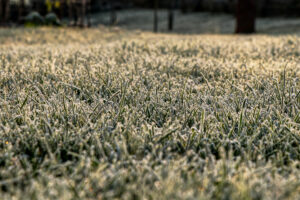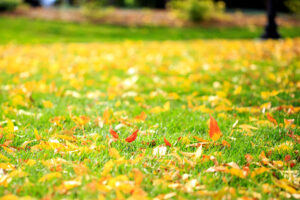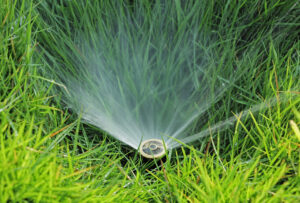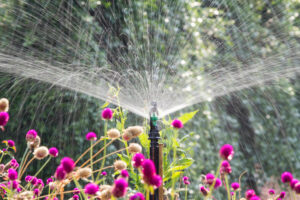South Austin Irrigation, Helping You Protect Your Landscape Through Central Texas Winters
Winter in Austin doesn’t bring months of snow or deep freezes, but the weather does shift dramatically. One day can feel like spring, and the next night temperatures plunge below freezing. These rapid changes, unique to Central Texas, create specific challenges for sprinkler systems and lawn health.
This educational guide explains how Austin’s climate affects sprinklers, grass growth, watering needs, and winter lawn care. The more you understand the “why,” the better you can protect your landscape and prepare for a healthy, thriving spring.
What Cold Weather Actually Does to Sprinkler Systems
Many homeowners assume that because Austin doesn’t have long winters, sprinkler systems don’t need attention. In reality, sudden temperature swings cause the most damage.
Why?
Water expands when it freezes.
Pipes don’t need long exposure, just a few hours below 32°F can cause:
- Hairline cracks in PVC
- Stress fractures in fittings
- Damage to backflow preventers
- Leaks that stay hidden until spring
- Zone pressure problems
- Valve malfunction
Even if your system doesn’t “burst,” freeze–thaw cycles gradually weaken components, shortening system lifespan.
How to Reduce Freeze Damage — The Austin Way
Austin homes generally do not require a full blow-out winterization like northern states. Instead, we follow freeze-prevention and system protection, which is more appropriate for our climate.
Key protective steps include:
✔ Insulate the backflow assembly
This is the most vulnerable part of the system because it’s above ground and full of water.
✔ Ensure the shutoff valve is accessible
If a severe freeze is predicted, temporarily turning off the water supply to the irrigation system reduces stress.
✔ Pause watering cycles during freezing weather
Use “Off,” “Stop,” or “Rain Mode” on the controller—but do not delete your programming.
✔ Inspect for leaks after freezes
A zone that suddenly loses pressure or forms puddles may indicate damage.
The goal is not to “winterize” the entire system but to safeguard the components most affected by short freezes.
How Much Should You Water Your Lawn in Winter?
Austin’s grasses (St. Augustine, Bermuda, Zoysia) naturally slow down when soil temperatures drop. Dormancy is normal, but dormant grass still needs moisture.
Too little water can cause root dehydration
Too much water can cause fungus and root rot
Recommended Winter Watering for Austin
- Water once every 2–3 weeks
- Apply ½ inch of water per session
- Water midday to avoid overnight freezing
- Skip watering during rainy weeks
Why minimal watering matters
Even during dormancy, roots require moisture to:
- Maintain cell structure
- Survive cold stress
- Prevent desiccation (drying out)
- Support stronger spring recovery
And your sprinkler system needs water to keep the seals lubricated or they will dry out and crack.
A drought-stressed winter lawn always comes back thinner and weaker in March.
Should You Install or Lay Sod in Winter?
This is one of the most common questions Austin homeowners ask.
The short answer: Usually no.
Winter soil temperatures are too cool for rapid root development. Grass installed in cold weather:
- Establishes very slowly
- Requires careful watering
- Is more sensitive to foot traffic
- May struggle if a hard freeze occurs
When winter sod can work:
- If installed during a mild stretch (temperatures above 50–55°F)
- With consistent—but not excessive—watering
- If the goal is erosion control, not immediate growth
For the healthiest results, Austin’s ideal times for sod installation are March–May and late September–October.
Winter Lawn Care Tips to Prepare for a Healthy Spring
Healthy spring lawns are made in winter. Here’s how to set yours up for success:
1. Keep the lawn clear of debris
Leaves, branches, and thatch hold moisture and create fungal issues.
2. Mow for as long as the grass is actively growing
Once temperatures drop regularly below 50°F, mowing frequency declines, but a final clean mow helps prevent disease.
3. Prevent soil compaction
Winter rains + foot traffic = packed soil. Aeration in early spring can dramatically improve lawn health.
4. Spot-treat winter weeds
Weeds thrive when grass growth slows. Managing them now reduces spring takeover.
5. Protect sensitive plants near irrigation zones
Freeze cloth, mulch, or burlap helps maintain soil warmth.
6. Evaluate your sprinkler system’s coverage
Winter is the perfect time to check for:
- Poor head alignment
- Uneven watering
- Miscalibrated pressure
- Dry or oversaturated patches
Small adjustments now prevent major problems later.
Why Work With South Austin Irrigation During the Winter Months?
Winter is the best time for a professional irrigation assessment because:
- You’re using the system less
- You minimize disruption to active lawn growth
- Issues uncovered now won’t ruin your spring turf
- Freeze-related damage can be caught early
- Your controller can be optimized for winter watering
Our technicians specialize in Central Texas irrigation systems and understand how Austin’s rapid weather swings affect performance.
Schedule Your Winter Irrigation Check-Up Today
With freezes, warm-ups, and unpredictable weather ahead, winter is the perfect time to prepare your lawn and sprinkler system for a strong and vibrant spring. Read more about winter care for your sprinkler system here!
Call South Austin Irrigation at (512) 534-7449 to schedule a winter system evaluation.
Protect your irrigation system
Improve lawn health
Catch hidden issues early
Set up your landscape for spring success
South Austin Irrigation is here to keep your system running smoothly, no matter the season.






